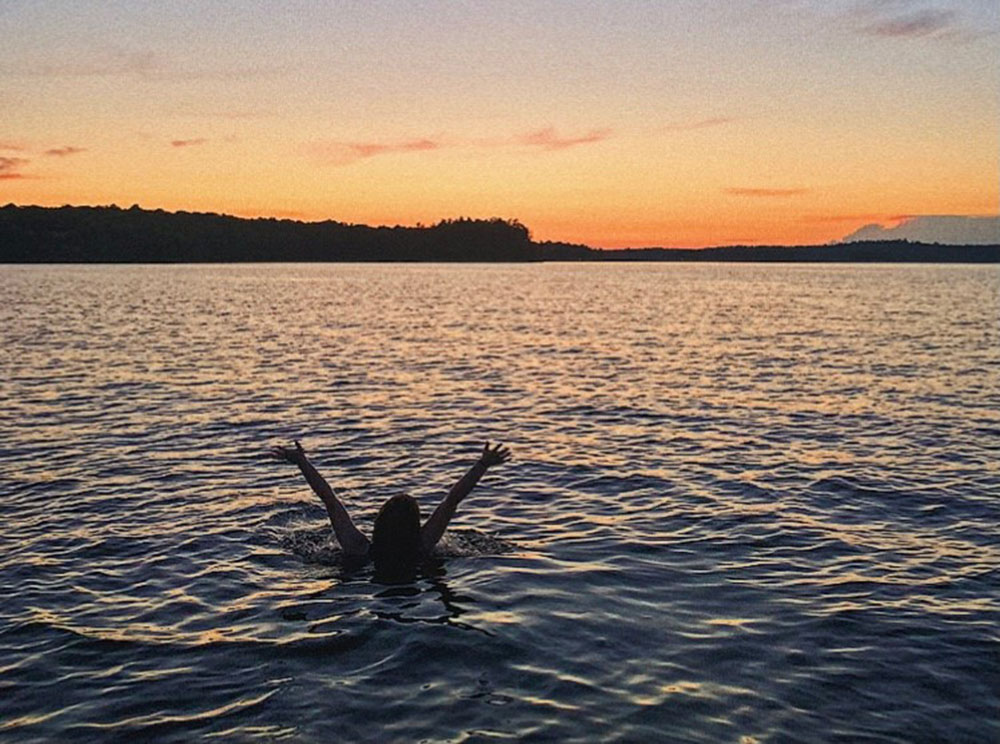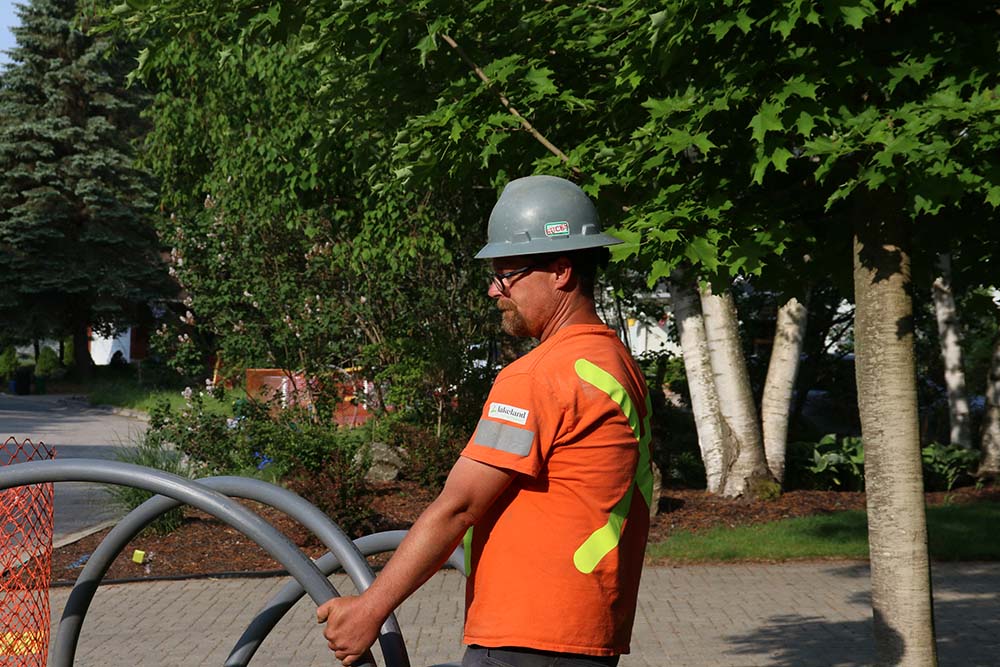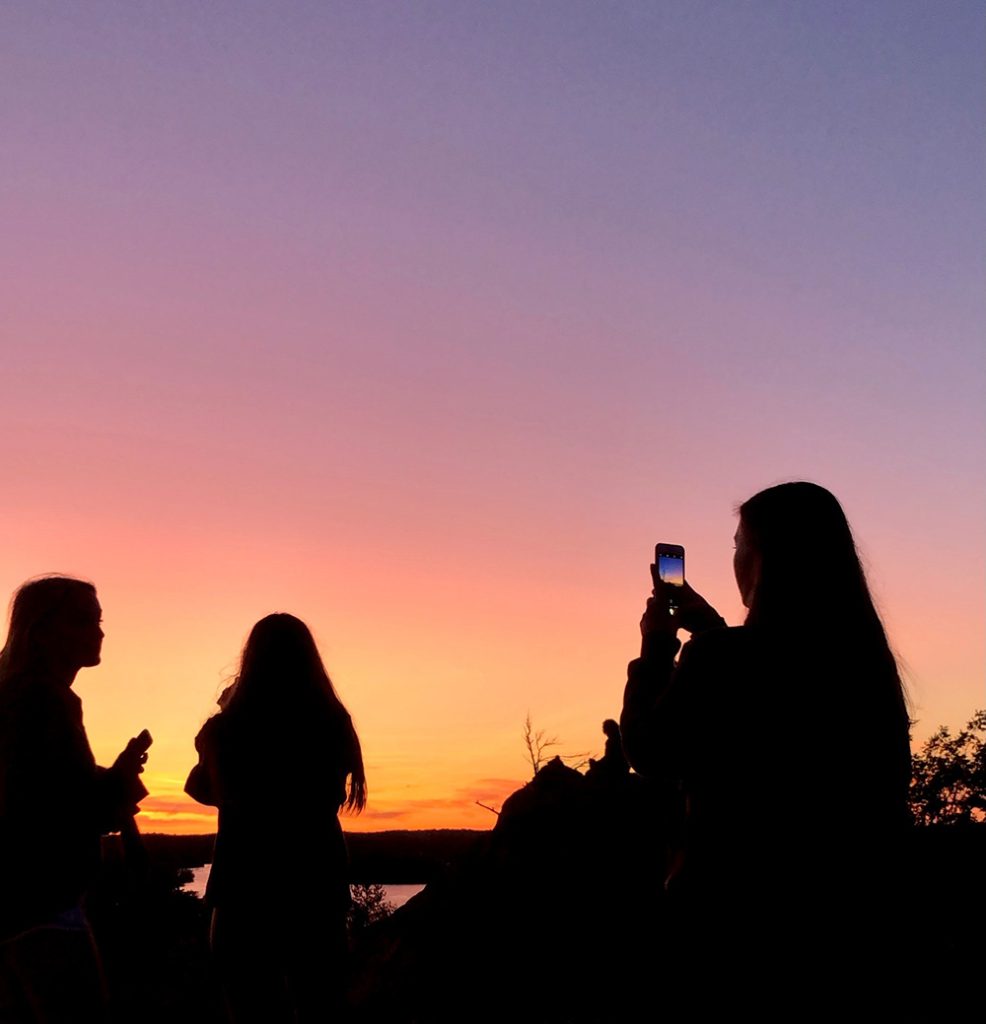Written by Paige Robertson

Welcome to Summer! With the school year ending, the outdoor work season reaching full swing, and the annual doubling of our population beginning to settle in, it can be hard to keep track of the little things—no matter how important they may be. For many of us, sun safety often falls into this forgotten category, with passive thoughts of “Do I need sunscreen?” fleeting by in the wake of keeping the kiddos from getting into trouble, finishing that next job, or getting out on the water before the boat traffic gets too bad. But this doesn’t make the consequences of solar radiation any less dire! Blocking harmful UV rays is essential to protecting against sun damage and skin cancer, which is why we’re so adamant about sun safety here at Lakeland Networks. Included below are some of the tips we give our folks out on the road to stay safe in the sun, as well as a couple additional measures you can take in your daily lifestyle to stay protected
1. Your clothes are your armour against UV rays
In order to protect yourself, choosing your daily outfit doesn’t just mean wearing what looks good. The different cuts, materials, and colours of your clothing will dictate how you interact with UV radiation and determine exactly how much sun your skin is receiving. Let’s look at these factors:
Colour: While white is great for keeping you cool, white coloured clothing actually performs the worst out of all colours for UV protection. A white t-shirt only provides 7 SPF! Instead, choose to wear dark and very bright clothes as they allow less radiation to penetrate through the clothing and into you by absorbing the rays into the material instead. Always check your labels for UPF information as well, since this indicates exactly how much radiation is penetrating your fabric and reaching your skin! When choosing to buy new clothes, see if you can find items with a UPF of over 30 (however, anything higher is even better).
Fit: If you have the option, you should choose loose-fitting clothes. This style of cut not only keeps you cool, but it prevents stretching, which is a major factor in reducing the maximum level of protection an item has! In this same vein, be careful when getting your clothing wet, as wet clothing can become transparent and lose some of its protective ability. And, while this may seem obvious, choosing items with more coverage offers much better protection than those that don’t! On days that it isn’t boiling hot, choose long skirts, pants, and sleeves.

Material: Let’s look at the content and construction of your items. Content-wise, unbleached cotton acts as a UV absorber as it contains natural lignins (part of the plant that is dense), whereas shiny polyesters or satiny silks can be highly protective due to their reflective nature! Opt for these contents where possible, but if you want to ensure better protection, high-tech fabrics can prevent some penetration of UV rays when treated with chemical UV absorbers or UV specific dyes. Now, let’s talk about the construction of your clothes! Anything that’s densely woven, such as synthetic fibres, denim, wool, or canvas will be leagues more protective than sheer, loosely woven, or thin materials. If you want to test this out at home, hold up your item to the sunlight and see how much light shines through, because that’s what’ll be hitting you!
2. Sun safety from the inside out: Food and UV rays
Did you know that your diet can affect how your skin takes sun damage? While diet should never take the place of using SPF in your lifestyle, some foods can act as a sort of edible sunscreen and provide a small amount of protection from sun damage or can help to heal in the recovery process! Antioxidants in particular are great at offering a natural boost to sun protection as they accumulate in the skin and absorb sunlight of differing wavelengths, additionally decreasing the risk of skin cancer, and protecting against aging via free radical damage to cells due to UV radiation. Fibre is also a key factor to sun protection, as promoting a healthy gut biome correlates to a less irritated skin barrier that’s less likely to lose moisture.
Some examples of these foods that you can add to your shopping list include tomatoes, sweet potatoes, spinach, berries, grapes, pomegranates, oranges, kiwi, fatty fish, flaxseeds, walnuts, etc.
It’s also essential to keep drinking water, as sun exposure dries out your skin and dehydrates your body! And always opt or water down by the dock instead of alcohol, as alcohol consumption increases your chances of sun damage, can make it hard to keep track of how long you’ve been exposed to the sun without re-applying SPF, and will worsens heat exhaustion symptoms.
3. Limit and protect your time in the sun.

The easiest way you can protect yourself from heatstroke and sun damage is avoiding spending time in the sun when its intensity is at its highest. Limiting your time in the sun between 10 a.m. and 2 p.m. will ensure you’re not bearing the brunt of all our star’s wrath. However, if you must be exposed to UV radiation, it’s essential to use broad-spectrum UVA protected sunscreens of the highest SPF-level you can find! Ensure you’re reading your sunscreen labels and that your choice of SPF is above at least 15. Also be sure to not fall for false advertising for “Waterproof Sunscreen”. This doesn’t actually exist! Sunscreens can only come with water resistance claims that range from 40 to 80 minutes to let you know exactly how much time you’re able to spend in the water before re-applying.
Try to stay hydrated, in the shade, and wear UV protected sunglasses. The biggest misconception with sunglasses is that dark tinted lenses offer the same protection as UV protection. This is false! Choosing sunglasses that offer UV 400 is your best option as they block almost 100% of all harmful radiation. In the same vein, make sure your children’s sunglasses offer UV protection as well, as many children’s sunglasses can be marketed as “Toy Sunglasses” that offer no protection whatsoever.
Final comments.
If you’ve made it this far, there’s no more excuses to get burnt this summer! Keep yourself and others protected with these 3 tips, and if you’re feeling like a good Samaritan, perhaps share this blog with your friends and family to keep them protected as well. Here at Lakeland, safety is our #1 priority, which means we hope you take this information to heart and have a lovely—and safe—summer.
